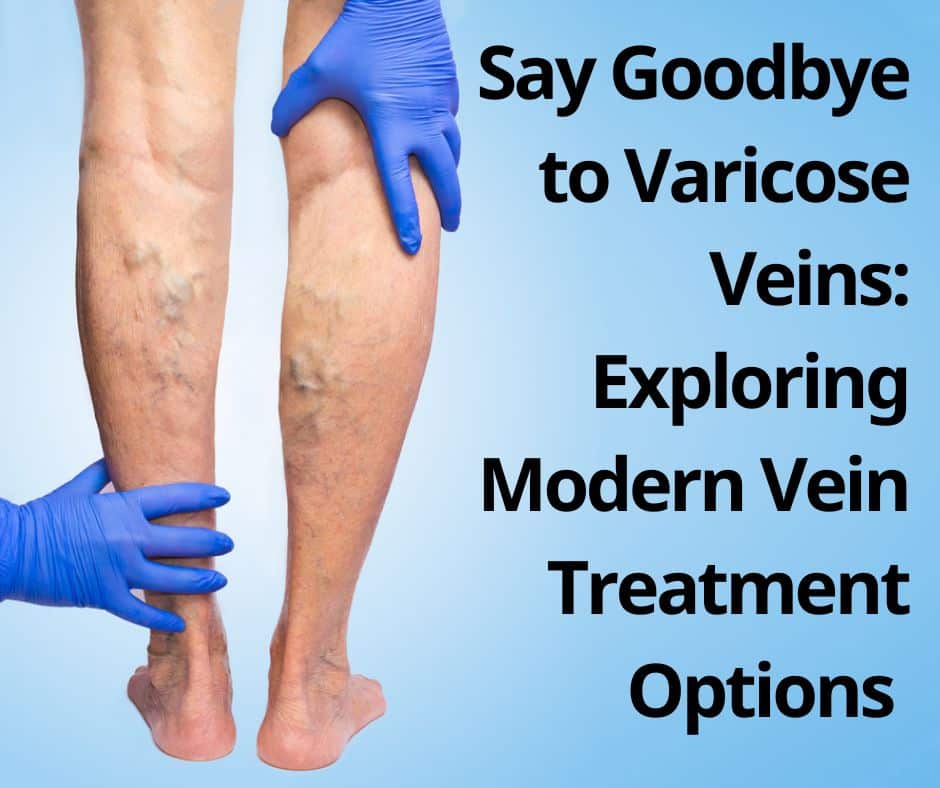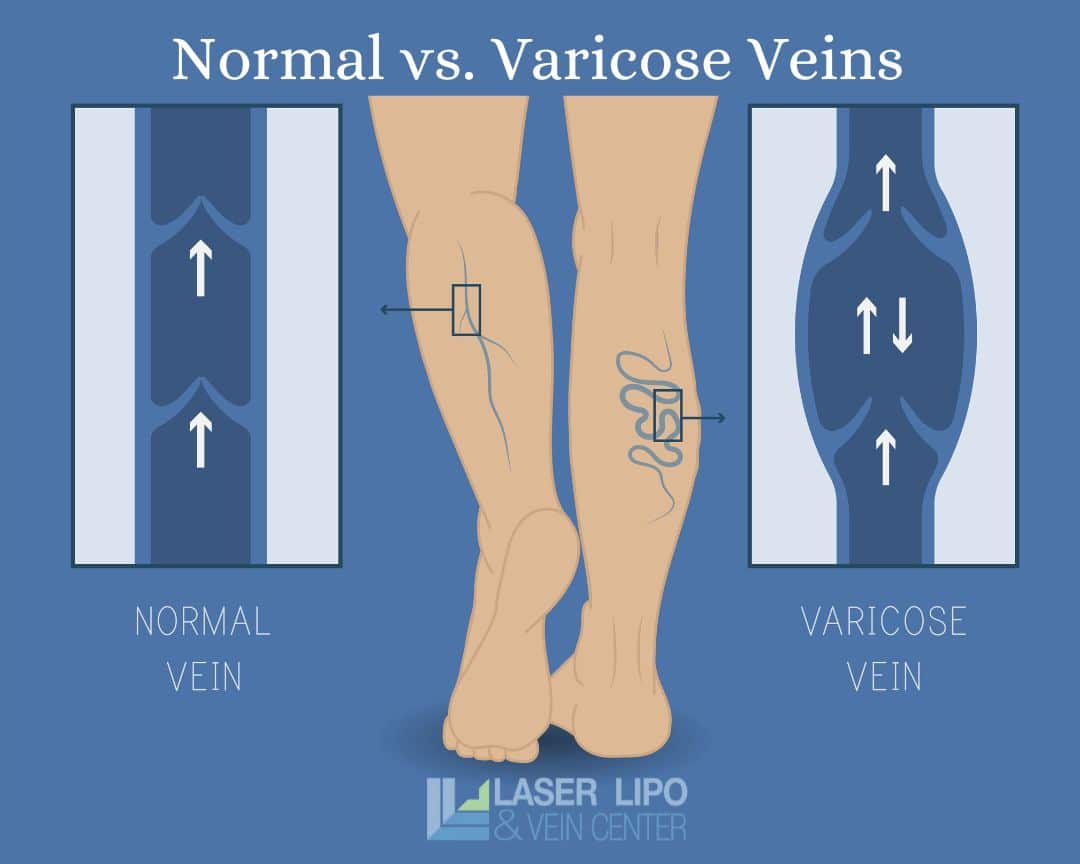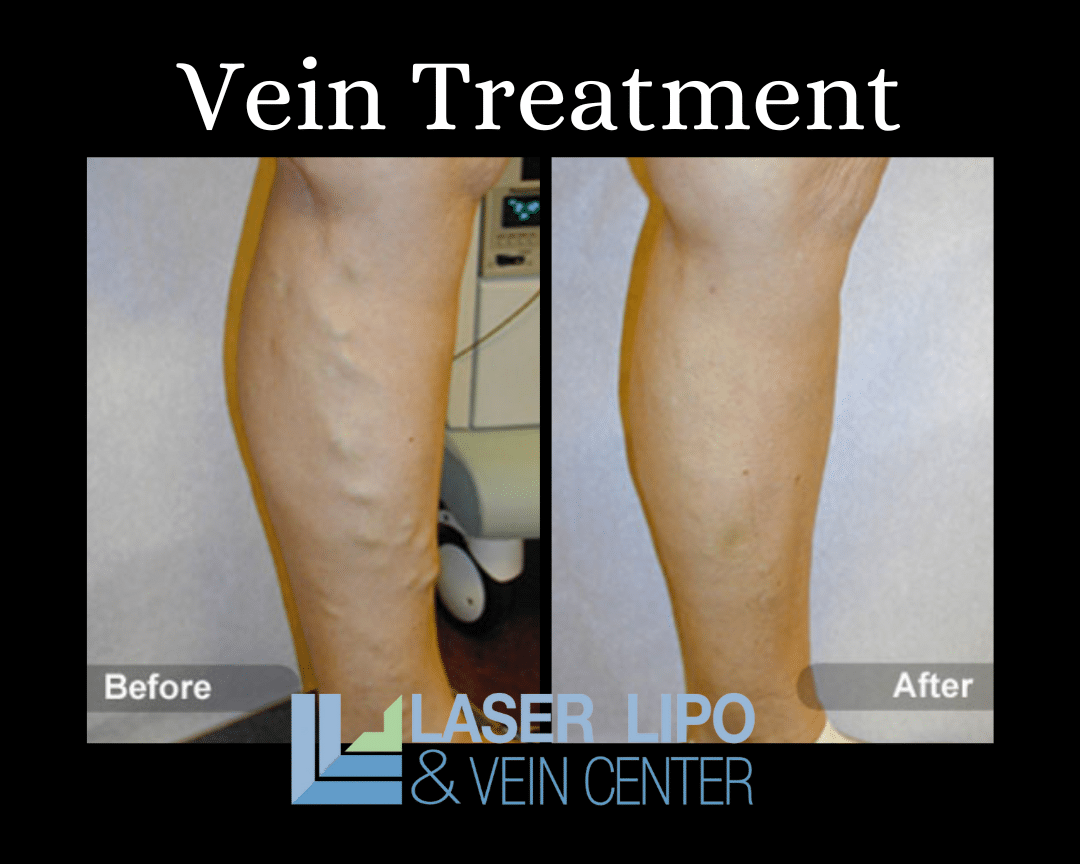Varicose veins can be more than just a cosmetic concern. They can cause discomfort, pain, and insecurity for those who suffer from them. While some individuals may seek treatment for aesthetic reasons, it is crucial to understand that neglecting varicose veins can lead to serious health risks. The good news is that with comprehensive treatment options, you can minimize symptoms and prevent complications. In this article, we will explore various treatment options for varicose veins, including minimally invasive procedures like sclerotherapy, endovenous laser ablation, and radiofrequency ablation. We will delve into how these treatments work, their effectiveness, potential benefits over traditional surgical approaches, and the importance of consulting a qualified vein specialist for personalized advice.
 Understanding Varicose Veins
Understanding Varicose Veins
Varicose veins are a medical condition characterized by swollen, twisted veins that often appear blue or purple and bulge out from the skin. They typically occur in the legs and feet due to the pressure placed on the veins from standing and walking. Common symptoms of varicose veins include aching and pain, leg cramps, heaviness, itching, burning, ankle swelling, tiredness, throbbing skin, changes in skin color, and skin ulcers. These veins are caused by weakened or damaged valves in the veins, which impairs blood flow and leads to blood pooling. Age, pregnancy, genetics, obesity, and a sedentary lifestyle are some of the factors that can contribute to the development of varicose veins.
The Health Risks of Untreated Varicose Veins
While varicose veins may seem harmless, neglecting to treat them can lead to serious health problems. Some potential complications include the formation of blood clots, skin ulcers, chronic inflammation, and venous insufficiency. Venous insufficiency occurs when damaged veins cannot efficiently transport blood from the legs to the heart, resulting in swelling, pain, and fatigue. It is essential to seek treatment for varicose veins as soon as possible to minimize the risks of these complications.
Non-Surgical Treatment Options for Varicose Veins
Thankfully, there are several non-surgical treatment options available for varicose veins. These treatments are minimally invasive and have proven to be effective in reducing symptoms and improving overall vein health. Let’s take a closer look at some of these non-surgical treatment options:
Compression Stockings Therapy
Compression stockings are a common and conservative treatment option for varicose veins. They work by helping leg muscles move blood up the leg towards the heart and preventing superficial veins from pooling with blood. Compression stockings provide graduated pressure, with the strongest pressure at the ankles and gradually decreasing as they move up the leg. This pressure helps to improve blood flow and reduce swelling in the legs.
Endovenous Laser Ablation (EVLA)
Endovenous laser ablation, also known as EVLA, is a minimally invasive procedure that uses laser energy to heat and close the damaged vein gently. During the procedure, a small laser fiber is inserted into the affected vein, and laser energy is applied, causing the vein to collapse and seal shut. The body then naturally redirects blood flow to healthier veins. EVLA is performed under local anesthesia and typically takes about an hour to complete. It offers a shorter recovery time than traditional surgery, with most patients able to resume their normal activities within a few days.
Sclerotherapy
Sclerotherapy is another popular non-surgical treatment option for varicose veins. It involves injecting a solution directly into the affected vein, causing irritation and inflammation. This inflammation leads to the closure of the vein, and over time, the body absorbs the treated vein. Sclerotherapy is performed in-office and does not require anesthesia. The procedure typically takes about 30 minutes to complete, and multiple sessions may be required for optimal results. Recovery time is minimal, and most patients can resume their daily activities immediately after treatment.
Radiofrequency Ablation (RFA)
Radiofrequency ablation, or RFA, is a minimally invasive procedure that uses radio waves to heat and destroy the damaged vein. During the procedure, a small catheter is inserted into the vein, and radiofrequency energy is applied, causing the vein to close. Similar to EVLA, the body redirects blood flow to healthier veins. RFA is performed under local anesthesia and typically takes about an hour to complete. Recovery time is relatively short, with most patients able to resume their normal activities within a few days.
Other Non-Surgical Treatment Options
In addition to compression stockings, EVLA, sclerotherapy, and RFA, there are other non-surgical treatment options available for varicose veins. These include VenaSeal closure system, which uses medical-grade glue to seal the vein; micro phlebectomy, a procedure that removes varicose veins through tiny incisions; and ultrasound-guided sclerotherapy, a technique used to treat smaller or more twisted veins. The specific treatment option recommended will depend on the individual’s condition and the advice of a qualified vein specialist.
The Benefits of Comprehensive Treatment Plans
While each treatment option alone can provide benefits, comprehensive treatment plans that combine multiple approaches offer the best results for individuals with varicose veins. Many hospital and hospital employed surgeons only offer partial treatment of vein disease and problems. This can lead to incomplete vein treatment and earlier recurrence of vein problem. This is why comprehensive vein care is so important. Here are some key benefits of comprehensive treatment plans:
Addressing Underlying Causes
Comprehensive treatment plans focus not only on treating the visible symptoms but also on addressing the underlying causes of varicose veins. By targeting the root of the problem rather than just the surface, comprehensive treatment plans can provide long-lasting results and reduce the likelihood of recurrence.
Personalized Approach
Every individual is unique, and the severity and nature of varicose veins can vary from person to person. Comprehensive treatment plans are tailored to the individual’s specific needs, taking into account factors such as age, overall health, and medical history. This personalized approach ensures that patients receive the most appropriate treatment options for their condition.
Encouraging Lifestyle Changes
Comprehensive treatment plans not only focus on treating varicose veins but also encourage lifestyle changes that can reduce the risk of future complications. Patients are advised to exercise regularly, maintain a healthy weight, avoid prolonged periods of standing or sitting, and wear compression stockings as needed. These lifestyle changes can significantly improve vein health and overall well-being.
Consult a Qualified Vein Specialist
If you are considering treatment for your varicose veins, it is essential to consult a qualified vein specialist. A vein specialist will evaluate your condition, recommend the most suitable treatment options, and provide personalized advice based on your unique circumstances. They will guide you through the process, address any concerns or questions you may have, and ensure that you receive the best possible care.
In conclusion, varicose veins are not just a cosmetic concern but a medical condition that can lead to serious health risks if left untreated. Fortunately, modern vein treatment options offer effective and minimally invasive alternatives to traditional surgery. Treatments like sclerotherapy, endovenous laser ablation, and radiofrequency ablation have shown promising results in reducing symptoms and improving vein health. Comprehensive treatment plans that combine multiple approaches can provide even better outcomes, addressing underlying causes and encouraging lifestyle changes. If you are experiencing varicose vein symptoms, consult a qualified vein specialist to explore your personalized treatment options and say goodbye to varicose veins for good.

 Understanding Varicose Veins
Understanding Varicose Veins
